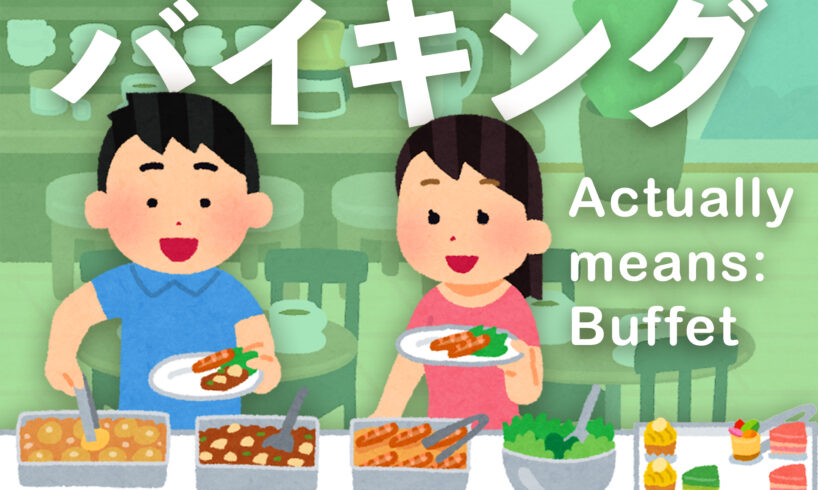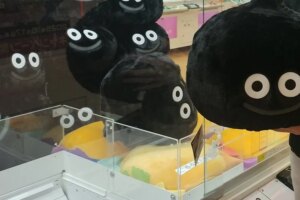
Walking around Japan, especially big metropolitan cities like Tokyo, you’ll encounter many words that are borrowed from English and other foreign languages. These words have evolved and been incorporated into the Japanese language. Typically written in the katakana syllabary (or moraic system), they are pronounced according to Japanese phonological rules.
“Japanglish” words such as hoteru (hotel) and erebe-ta- (elevator) are direct anglicisms, while depa-to (department store), pasokon (personal computer) and sumaho (smartphone) serve as shortened mainstream nicknames, aka clipped loanwords. Hochikisu (also hotchikisu), or stapler, derives from the American office supply brand E. H. Hotchkiss Company — a case of a brand name becoming a genericized trademark. Sometimes, as seen with the Russian-derived kachu-sha (headband), vocabulary seemingly sprouts up randomly.
But other times, what seem to be genuine loanwords (known as gairaigo) are a completely different beast, meaning entirely different things than the images they conjure in an English-speaker’s head. This category of English-derived words, called wasei eigo, is made up of pseudo-anglicisms, some simple enough but others are completely novel creations composed of elements from multiple sources, in this case, English words or phrases.
Here’s a list of common wasei eigo terms you might come across that will make you do a double take, and an explanation of each word’s true meaning.
Common Wasei Eigo Terms
マンション | Manshon
Mistaken for: Mansion | Actually means: Condominium or apartment
This is one of those words that often results in miscommunication. While manshon may spark the image of a luxurious, castle-like oasis, in Japanese, the word simply means “condominium” or “apartment.” These multistory residential buildings are typically made with reinforced concrete or steel, offering a touch more security and soundproofing than apa-to — generally smaller apartment buildings built with wooden or light steel structures. Higher-end manshon may have more bougie amenities, such as concierge services, but are, more often than not, humble residences.
The takeaway? When your friend invites you over to their “mansion,” they very likely mean “manshon,” so don’t set your expectations too high.
コーデ | Ko-de
Mistaken for: Code | Actually means: Outfit
Ko-de is the shortened version of ko-dine-to (coordinate). While the English “coordinate” can sound a bit stiff, the Japanese “ko-de” simply spotlights the intentional thought process used to create a cohesive and stylish ensemble. A casual term, it describes any carefully coordinated outfit or look.
ピアス | Piasu
Mistaken for: Pierce | Actually means: Earring
While typical pierced earrings could technically be classified as “piercings,” the term is often reserved for jewelry placed anywhere outside of the earlobe — think tragus or naval piercings. The distinction between “piercing” and “earring” in Japanese, however, is different: Piasu are accessories that go through the skin, while iyaringu refer to clip-on earrings.
In Japan, where a 2014 study found that just 25% of Japanese women had pierced ears (and many fewer had piercings elsewhere), and where many primary and secondary schools prohibit piercings of any kind, you’ll likely encounter more clip-on designs.
バイキング | Baikingu
Mistaken for: Biking | Actually means: Buffet
The all-you-can-eat restaurant has a wide range of names. The Japanese term is tabehodai (unlimited eating), but you’ll also see the borrowed words byuffe (buffet) and baikingu (viking). While the Japanese pronunciation of “viking” makes it sound like a cycling activity, it’s most definitely not — though a bicycle ride may well be needed post-“viking” to combat the food coma that’s almost guaranteed.
There are two theories on the etymology of baikingu. One connects the Nordic origins of Vikings to the Swedish smorgasbord, while the other claims that the word was popularized after Japan’s first buffet dining experience opened in 1958 at the Imperial Viking, a restaurant at Tokyo’s Imperial Hotel.
コンセント | Konsento
Mistaken for: Consent | Actually means: Electrical outlet
Konsento does not refer to the granting of permission; rather, it’s the Japanese word for electrical outlet or socket. A tricky clipped form of “concentric plug,” a term dating to the introduction of electrical outlets from Europe to Japan during the Meiji era, the devices got their name from their circular shape. Over time, the word was shortened to simply “konsento.”
コンプレックス | Konpurekkusu
Mistaken for: Complex | Actually means: Insecurity
In English, the word “complex” has several meanings. When used alone, however, it most often alludes to something — an activity, situation, system, etc. — that’s challenging or complicated. The most common meaning of the Japanese konpurekkusu, on the other hand, derives from the psychological concept of the inferiority complex. Though casual English has a similar way of using the word “complex” to denote a sense of inferiority or sensitivity around, for example, a body part, that particular usage isn’t the prevailing one. In Japanese, konpurekkusu is the standardized noun for insecurities about oneself that cause feelings of inferiority.
Further complicating things, konpurekkusu can be shortened to konpu, a clipped form you’ll hear in the short-form compound gakureki konpu — insecurities surrounding academic background when talking with people from higher education levels.
シール | Shi-ru
Mistaken for: Seal | Actually means: Sticker
With quite a few zoo animals labeled with loanwords from English, such as raion (lion) and pengin (penguin), shi-ru can be a confusing near-homophone. It does not, however, refer to the marine mammal known as a “seal.” Instead, it means “sticker.”
It’s believed that “shi-ru” was used for the first time around 1911, when Japan’s Imperial Household Agency commissioned a seal featuring the imperial family’s 16-petaled chrysanthemum crest to secure gifts for the coronation of King George V in the UK. In the late 1920s, adhesives expanded the uses of seals, and they developed into the sticky-backed decorative stationery items we know today.
Nowadays, stickers are also known as sutekka- — though plenty of ink has been spilled discussing whether shiru and sutekka– are one and the same. While there doesn’t seem to be a strict definition of either, many printing companies stick to this guideline: Shi-ru are for indoor use; sutekka– are for outdoor use. That said, you will find some stationery with no clear distinction between the two based on intended use.
シャーペン | Sha-pen
Mistaken for: Sharpen | Actually means: Mechanical pencil
In Japanese, “sha-pen,” which sounds like “sharpen” with a dropped “r,” is not a verb; it’s the word for “mechanical pencil.” The origins of this pseudo-anglicism — a clipped form of “sha-pu penshiru” (sharp pencil) — are at least partially related to one of the world’s best-known electronics manufacturers: Sharp. Before Sharp existed as Sharp, it was a metalworking shop owned and operated by Tokuji Hayakawa. In 1915, Hayakawa invented the Hayakawa Mechanical Pencil, receiving a patent for it in 1920. The pencil was eventually marketed as the Ever-Ready Sharp Pencil.
Across the Pacific in the United States, another mechanical pencil with “sharp” in its name was selling well: the Eversharp pencil. Whether from Hayakawa’s pencil alone or a combination of the two pencils, the name “sha-pu penshiru” stuck. Today, you’ll hear mechanical pencils referred to as “sha-pu penshiru,” “sha-pu pen,” “sha-pen” and “sha-pu.”
トランプ | Toranpu
Mistaken for: (President) Trump | Actually means: Playing cards
Deriving from the English term “trump card,” which gained popularity in the 19th century, toranpu refers specifically to Western-style card decks, such as the 52-card French deck, which were introduced in a meaningful way in the Meiji period. Toranpu does not, however, apply to Japanese-style cards like hanafuda.
While the context usually makes the meaning clear, when discussing the American president, you will likely see an honorific attached to the name (e.g., Toranpu-shi) to clear up any potential confusion.
Related Posts
Discover Tokyo, Every Week
Get the city’s best stories, under-the-radar spots and exclusive invites delivered straight to your inbox.





